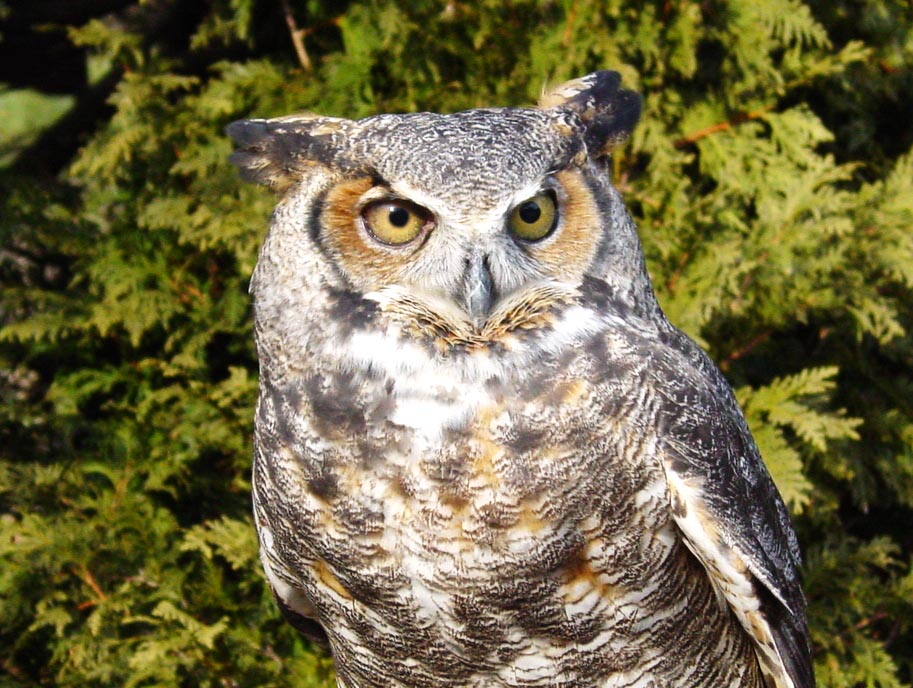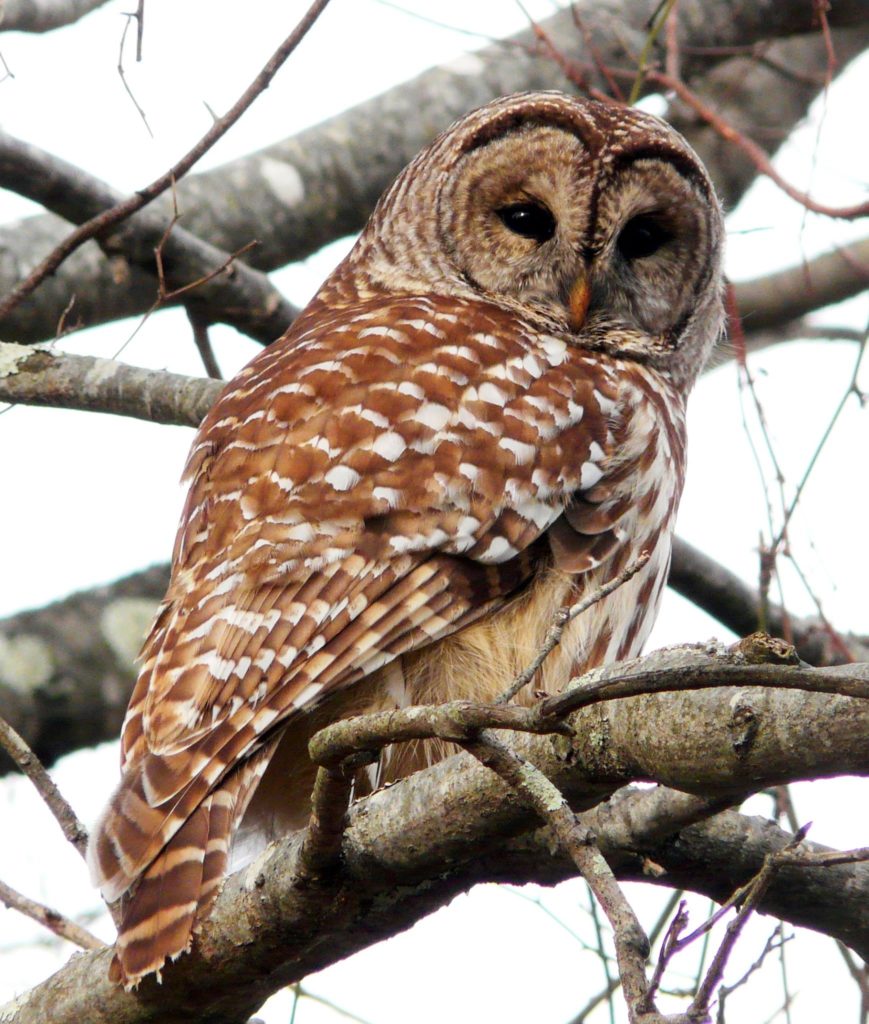You may be surprised to learn that owls can be heard in most neighborhoods and backyards, even in Boston and the near suburbs. Since many owl species begin looking for mates in winter and are at their most vocal this time of year, now is the perfect time to go “owling”—looking and listening for owls—either at a wildlife sanctuary or even in your own backyard!
The Secret Is…
…That there is no great secret to owling. The best thing to do, though, is to listen and study calls in advance. There are only a handful of species in Massachusetts in winter, so it is an easy group of birds to learn and listen for. Learn more about the eight owl species commonly found in Massachusetts and listen to recordings of their calls on our website.
Once you’ve got a few calls down pat, just go outside and start listening! Steer clear of windy nights because it can be hard to hear, and it’s best to avoid using a flashlight unless you need to since they can scare off the owls. For this reason, nights with bright moonlight are perfect for owling.

Great Horned Owl
What to Listen and Look For
This time of year, you’ll hear great horned owls, found throughout most of the state, calling around dusk. If they duet (two owls calling to one another), they are likely courting. You can tell male from female by the pitch: the females tend to “hoo, hoo” at a higher pitch than the baritone males.
Screech owls will nest in Boston backyards and use nestboxes readily (of course, so do squirrels!). Ounce for ounce, they are among the toughest owls around. Barred owls, found in most of Massachusetts other than the southeast, will call during the day with their famous refrain of “Who cooks for you?”
Of course, snowy owls are in a category by themselves; these large owls breed in the Arctic, but can often be seen during their migrations in spring and fall.

Barred Owl © Rene Laubach/Mass Audubon
Once you start to hear owls regularly in the same place, you can look for nests and later for owl “pellets”—regurgitated bones, fur, and feathers from their most recent meal—and eventually downy chicks.
Find a Program
Not ready to go on your own? You can always join an Owl Prowl program at one of our wildlife sanctuaries to benefit from the expert guidance of one of our naturalists. Happy owling!


Just yesterday, starting around 3:00 p.m., a Great Horned Owl was hooting in my Newton neighborhood. He (I’m assuming it was a he) continued off and on until almost 6:00, when my NPR news broadcast drowned out the outdoors. Although I often hear GHOs this time of year along the Charles River, I’ve never had the good fortune of spotting one. However, two years ago, one visited my yard long enough to deposit an owl pellet; I hope to receive more visits — and gifts — this year.
Walking one late afternoon in the woods, I happen to look up. There was a huge horned owl! It was amazing! I hear them calling but I never saw an owl in the wild. And I always walk looking down because I’m so clumsy. What a lucky happening
How to spot an owl, by Andi
1. become a freelancer who needs to take a walk every day to calm her anxious mind.
2. have it be winter
3. go for a walk and forget to bring your phone.
4. approach an odd-looking bundle of movement by the side of the road, because what could happen?
5. observe! an owl gutting a small hopefully dead animal for lunch
6. congratulations, you have spotted an owl!
That sure is a great way to calm down , thank you for putting that down on paper Andi.
Here in Falmouth, the Great Horned owls court in November-December and are now silent. Screech-owls were calling in late December and early January. We had one briefly in our screech-owl nest box but it was mobbed all day by jays and titmice and seems to have moved on. Always hoping….
I don’t see owls very often, and when i do I usually am not able to get a good look at them because they are moving quickly at night